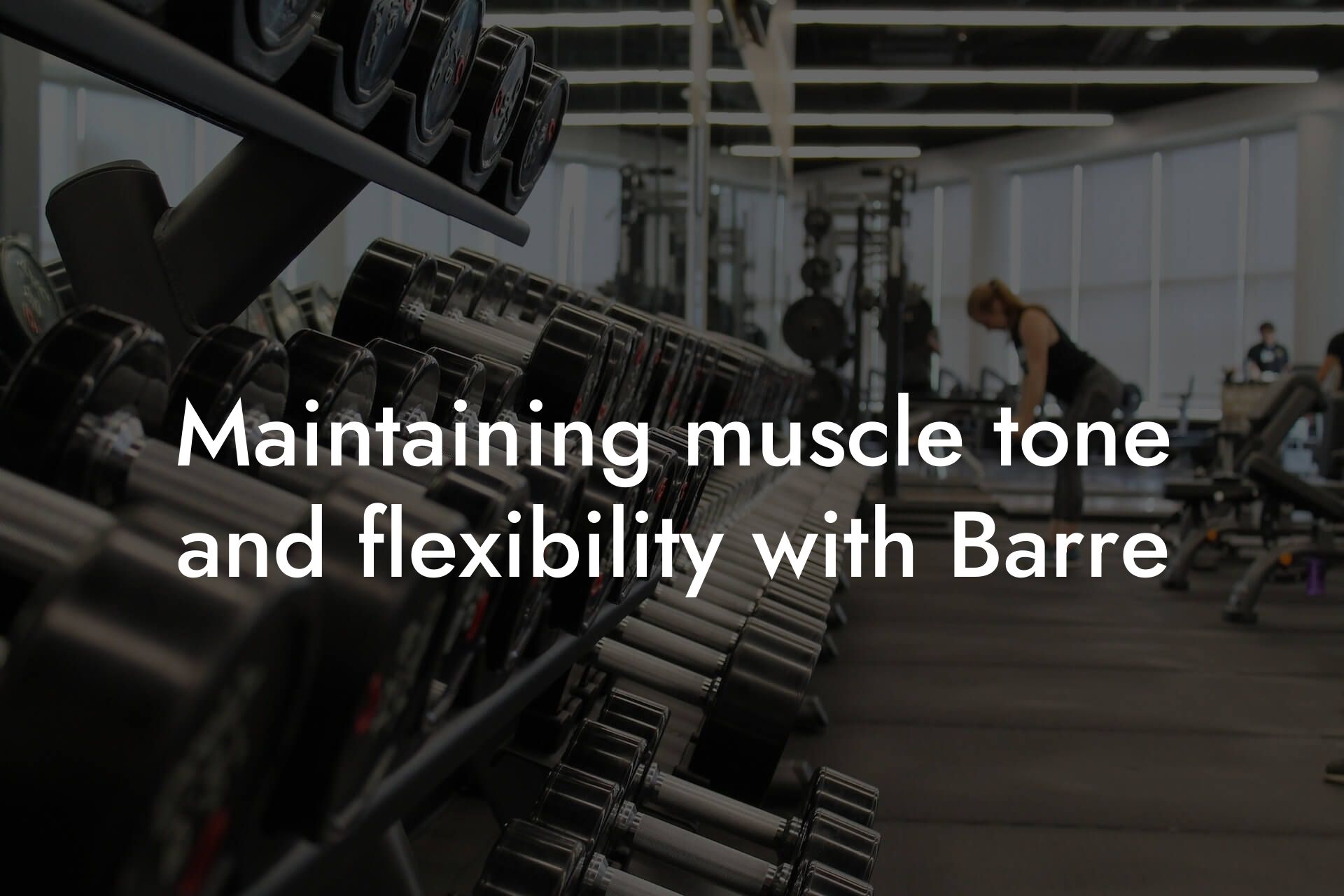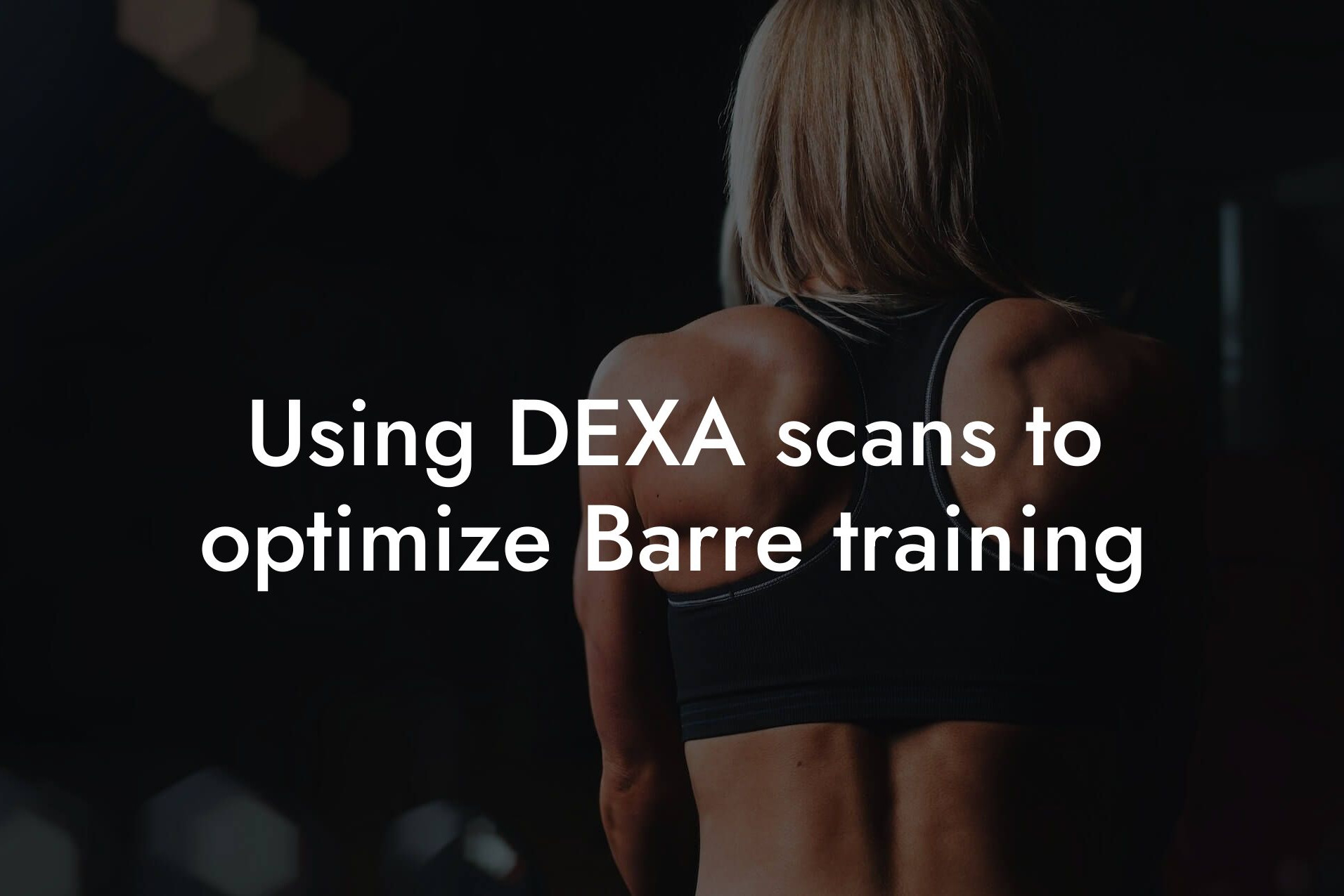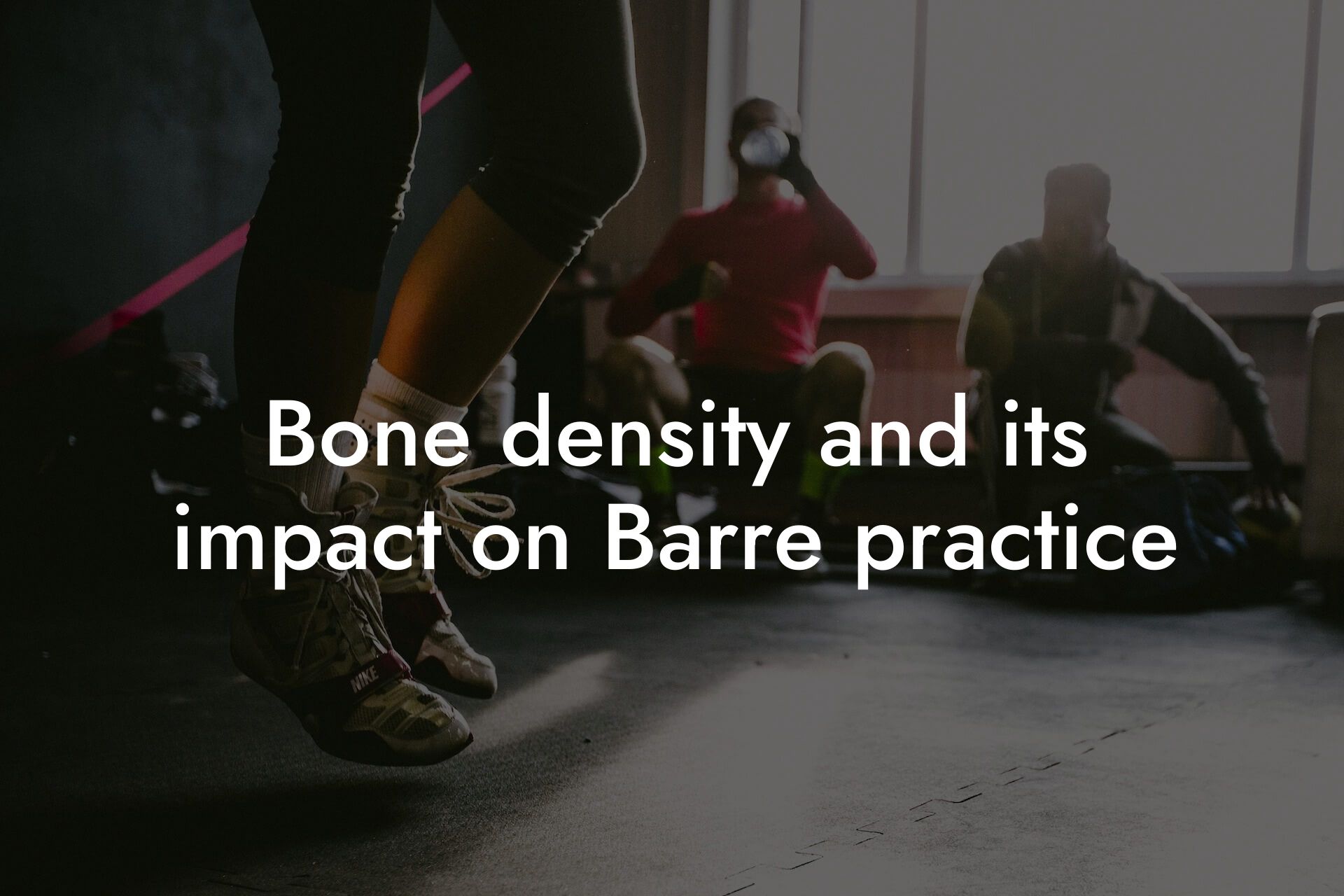Introduction to Barre and Its Benefits
As high-earning professionals, you understand the importance of maintaining a healthy and strong physique to perform at your best in both your personal and professional life. One of the most effective ways to achieve this is through barre, a low-impact, full-body exercise method that combines elements of ballet, Pilates, and yoga. Barre is an excellent way to improve flexibility, balance, strength, and posture, making it an ideal exercise routine for injury prevention and rehabilitation. In this article, we will delve into the benefits of barre for injury prevention and rehabilitation, and provide you with a comprehensive guide on how to incorporate it into your fitness routine.
Table of Contents
- Introduction to Barre and Its Benefits
- How Barre Can Help with Injury Prevention
- The Science Behind Barre and Injury Rehabilitation
- Common Injuries That Can Be Rehabilitated with Barre
- How to Modify Barre for Injury Rehabilitation
- Case Studies: Barre for Injury Rehabilitation
- How to Incorporate Barre into Your Fitness Routine
- Frequently Asked Questions
How Barre Can Help with Injury Prevention
Injury prevention is a crucial aspect of any exercise routine, and barre is no exception. By incorporating barre into your fitness routine, you can reduce your risk of injury in several ways. Firstly, barre helps to improve flexibility and range of motion, which can reduce the risk of muscle strains and pulls. Secondly, barre strengthens the core muscles, which are essential for maintaining good posture and preventing injuries. Finally, barre improves balance and coordination, reducing the risk of falls and other accidents.
The Science Behind Barre and Injury Rehabilitation
Barre is based on the principles of Pilates and ballet, which have been used for decades to rehabilitate injuries. The slow, controlled movements and isometric holds in barre help to strengthen the muscles and improve flexibility, making it an ideal exercise method for injury rehabilitation. Additionally, barre is low-impact, which means it can be modified to accommodate injuries and reduce the risk of further injury. Many physical therapists and rehabilitation centers are now incorporating barre into their treatment plans due to its effectiveness in promoting healing and reducing pain.
Common Injuries That Can Be Rehabilitated with Barre
Barre is an effective way to rehabilitate a variety of injuries, including:
- Knee injuries: Barre can help to strengthen the muscles around the knee, reducing the risk of further injury and promoting healing.
- Back injuries: Barre can help to strengthen the core muscles, improving posture and reducing the risk of back injuries.
- Shoulder injuries: Barre can help to improve flexibility and range of motion in the shoulder, reducing the risk of further injury.
- Ankle injuries: Barre can help to improve balance and coordination, reducing the risk of ankle injuries.
How to Modify Barre for Injury Rehabilitation
When modifying barre for injury rehabilitation, it's essential to listen to your body and take regular breaks to avoid exacerbating the injury. Here are some tips to help you modify barre for injury rehabilitation:
- Start slow: Begin with gentle, low-impact movements and gradually increase the intensity as your body allows.
- Focus on isometric holds: Isometric holds can help to strengthen the muscles without putting excessive strain on the injury.
- Use props: Props such as blocks, straps, and balls can help to modify the movements and reduce the risk of further injury.
- Work with a qualified instructor: A qualified instructor can help you modify the movements to accommodate your injury and provide guidance on proper form and technique.
Case Studies: Barre for Injury Rehabilitation
There are many case studies that demonstrate the effectiveness of barre for injury rehabilitation. For example, a study published in the Journal of Dance Medicine and Science found that barre exercises improved flexibility and range of motion in individuals with knee injuries. Another study published in the Journal of Orthopaedic and Sports Physical Therapy found that barre exercises reduced pain and improved function in individuals with chronic low back pain.
How to Incorporate Barre into Your Fitness Routine
Incorporating barre into your fitness routine can be easy and convenient. Here are some tips to help you get started:
- Find a local barre studio: Look for a local barre studio that offers classes and workshops specifically designed for injury prevention and rehabilitation.
- Invest in online classes: There are many online barre classes and tutorials available that can be done from the comfort of your own home.
- Work with a personal trainer: A personal trainer can help you create a customized barre routine that accommodates your injury and fitness goals.
- Start slow: Begin with gentle, low-impact movements and gradually increase the intensity as your body allows.
In conclusion, barre is an effective way to prevent injuries and rehabilitate existing ones. By incorporating barre into your fitness routine, you can improve flexibility, balance, strength, and posture, reducing the risk of injury and promoting overall health and well-being. Remember to listen to your body, modify the movements to accommodate your injury, and work with a qualified instructor to ensure a safe and effective workout. With patience, persistence, and the right guidance, you can achieve your fitness goals and maintain a healthy, strong physique.
At Tano Performance Group, we understand the importance of maintaining a healthy and strong physique to perform at your best in both your personal and professional life. That's why we offer comprehensive body assessments using our state-of-the-art DEXA machine. Our team of experts will work with you to create a customized fitness plan that meets your unique needs and goals. Contact us today to learn more about how we can help you achieve your fitness goals.
Frequently Asked Questions
What is Barre and how does it relate to injury prevention and rehabilitation?
Barre is a form of exercise that combines elements of ballet, Pilates, and yoga to provide a low-impact, full-body workout. It is an excellent way to improve flexibility, strength, and balance, making it an ideal exercise method for injury prevention and rehabilitation. By incorporating Barre into your fitness routine, you can reduce your risk of injury, improve your overall physical function, and accelerate your recovery from existing injuries.
How does Barre help with injury prevention?
Barre helps with injury prevention by strengthening the core, improving flexibility, and enhancing proprioception (your body's ability to sense its position and movement). This reduces the risk of injury by improving your overall physical function and reducing your susceptibility to common injuries such as strains, sprains, and overuse injuries.
Can Barre help with rehabilitation from a specific injury?
Absolutely! Barre is an excellent exercise method for rehabilitation from a wide range of injuries, including knee injuries, ankle sprains, hip replacements, and more. By modifying the exercises to accommodate your specific injury, Barre can help improve range of motion, strength, and flexibility, ultimately accelerating your recovery and reducing your risk of re-injury.
What are some common injuries that Barre can help with?
Barre can help with a wide range of injuries, including knee injuries, ankle sprains, hip replacements, shoulder injuries, back pain, and more. It is also an excellent exercise method for individuals with chronic conditions such as arthritis, fibromyalgia, and scoliosis.
How does Barre differ from other forms of exercise?
Barre differs from other forms of exercise in its focus on low-impact, controlled movements that engage the core and improve flexibility. This makes it an ideal exercise method for individuals who are recovering from an injury or who need a low-impact workout. Additionally, Barre incorporates elements of ballet, Pilates, and yoga, making it a unique and engaging exercise experience.
What are the benefits of incorporating Barre into my fitness routine?
The benefits of incorporating Barre into your fitness routine are numerous! Barre can help improve flexibility, strength, balance, and overall physical function, reducing your risk of injury and improving your overall health and wellbeing. It can also help improve posture, reduce stress, and enhance your overall physical appearance.
Do I need to have a dance background to do Barre?
No! You do not need to have a dance background to do Barre. Barre is a form of exercise that is accessible to individuals of all fitness levels and backgrounds. Our expert instructors will guide you through each exercise, providing modifications and adjustments as needed to ensure that you get the most out of your workout.
What should I wear to a Barre class?
We recommend wearing comfortable, stretchy clothing that allows for a full range of motion. You may also want to consider wearing grip socks or shoes with a good grip to help prevent slipping during the workout.
Do I need to bring any equipment to a Barre class?
No, you do not need to bring any equipment to a Barre class. We provide all the necessary equipment, including mats, resistance bands, and props. However, you may want to consider bringing a water bottle and a towel to class.
How often should I do Barre to see results?
We recommend doing Barre at least 2-3 times per week to see results. Consistency is key when it comes to seeing improvements in flexibility, strength, and overall physical function. However, even one class per week can be beneficial for injury prevention and rehabilitation.
Can I do Barre if I'm pregnant or postpartum?
Yes! Barre is an excellent exercise method for pregnant and postpartum women. Our expert instructors can modify the exercises to accommodate your changing body and provide a safe and effective workout. However, we do recommend getting clearance from your healthcare provider before starting any new exercise program during pregnancy or postpartum.
Can I do Barre if I have a chronic condition or disability?
Absolutely! Barre is an excellent exercise method for individuals with chronic conditions or disabilities. Our expert instructors can modify the exercises to accommodate your specific needs and abilities, providing a safe and effective workout. We recommend consulting with your healthcare provider before starting any new exercise program, especially if you have a chronic condition or disability.
How does Barre compare to other forms of exercise for injury rehabilitation?
Barre is an excellent exercise method for injury rehabilitation due to its low-impact, controlled movements that engage the core and improve flexibility. This makes it an ideal exercise method for individuals who need a low-impact workout or who are recovering from an injury. Additionally, Barre incorporates elements of physical therapy and rehabilitation, making it an excellent complement to traditional physical therapy.
Can I do Barre if I'm a beginner?
Absolutely! Barre is an excellent exercise method for beginners. Our expert instructors will guide you through each exercise, providing modifications and adjustments as needed to ensure that you get the most out of your workout. We also offer beginner's classes and workshops to help you get started.
How long does a typical Barre class last?
A typical Barre class lasts around 60 minutes. However, we also offer shorter and longer classes, as well as private sessions and workshops, to accommodate your schedule and fitness goals.
What is the atmosphere like in a Barre class?
The atmosphere in a Barre class is supportive, encouraging, and fun! Our expert instructors will guide you through each exercise, providing modifications and adjustments as needed, while our state-of-the-art studios provide a comfortable and relaxing environment.
Can I do Barre at home?
Yes! You can do Barre at home with our online classes and tutorials. We offer a variety of online classes and programs, including beginner's classes, advanced classes, and specialized classes for injury rehabilitation and prevention.
How does Barre compare to other forms of exercise for overall fitness?
Barre is an excellent exercise method for overall fitness due to its focus on low-impact, controlled movements that engage the core and improve flexibility. This makes it an ideal exercise method for individuals who want to improve their overall physical function, reduce their risk of injury, and enhance their overall physical appearance.
Can I combine Barre with other forms of exercise?
Absolutely! Barre is an excellent complement to other forms of exercise, including cardio, strength training, and flexibility exercises. By incorporating Barre into your fitness routine, you can improve your overall physical function, reduce your risk of injury, and enhance your overall physical appearance.
How does Barre affect bone density?
Barre can help improve bone density by strengthening the muscles and improving flexibility, which can help reduce the risk of osteoporosis and fractures. Additionally, the low-impact, controlled movements in Barre can help improve balance and reduce the risk of falls, which is especially important for individuals with osteoporosis or other bone-related conditions.
Can Barre help with weight loss?
Yes! Barre can help with weight loss by improving flexibility, strength, and overall physical function. Additionally, the low-impact, controlled movements in Barre can help improve metabolism and burn calories, making it an excellent exercise method for weight loss.
How does Barre affect body composition?
Barre can help improve body composition by improving flexibility, strength, and overall physical function. Additionally, the low-impact, controlled movements in Barre can help improve muscle tone and burn fat, making it an excellent exercise method for improving body composition.
Can I do Barre if I'm over 50?
Absolutely! Barre is an excellent exercise method for individuals over 50. Our expert instructors can modify the exercises to accommodate your specific needs and abilities, providing a safe and effective workout. Additionally, Barre can help improve flexibility, strength, and balance, which is especially important for older adults.
How does Barre compare to other forms of exercise for stress relief?
Barre is an excellent exercise method for stress relief due to its focus on low-impact, controlled movements that engage the core and improve flexibility. This can help reduce stress and anxiety, improve mood, and enhance overall wellbeing.
Here are some related articles you might love...
- Maintaining muscle tone and flexibility with Barre
- Using DEXA scans to optimize Barre training
- Bone density and its impact on Barre practice
- How to integrate Barre into a balanced fitness routine
- Nutrition tips for sustained energy in Barre classes
- Recovery strategies for Barre practitioners
- Reducing body fat for improved Barre results
- The importance of core strength in Barre fitness
- How body composition impacts Barre performance
Zak Faulkner
Zak Faulkner is a leading authority in the realm of physical health and body composition analysis, with over 15 years of experience helping professionals optimise their fitness and well-being. As one the experts behind Tano Performance Group, Zak has dedicated his career to providing in-depth, science-backed insights that empower clients to elevate their physical performance and overall health.
With extensive knowledge of DEXA technology, Zak specializes in delivering comprehensive body assessments that offer precise data on body fat, muscle mass, bone density, and overall physique. His expertise enables individuals to make informed decisions and achieve their fitness goals with accuracy and confidence. Zak’s approach is rooted in a deep understanding of human physiology, combined with a passion for helping clients unlock their full potential through personalised strategies.
Over the years, Zak has earned a reputation for his commitment to excellence, precision, and client-focused service. His guidance is trusted by top professionals who demand the best when it comes to their health. Whether advising on fitness programs, nutritional strategies, or long-term wellness plans, Zak Faulkner’s insights are a valuable resource for anyone serious about taking their health and fitness to the next level.
At Tano Performance Group, Zak continues to lead our Content Team revolutionising how professionals approach their physical health, offering unparalleled expertise that drives real results.




